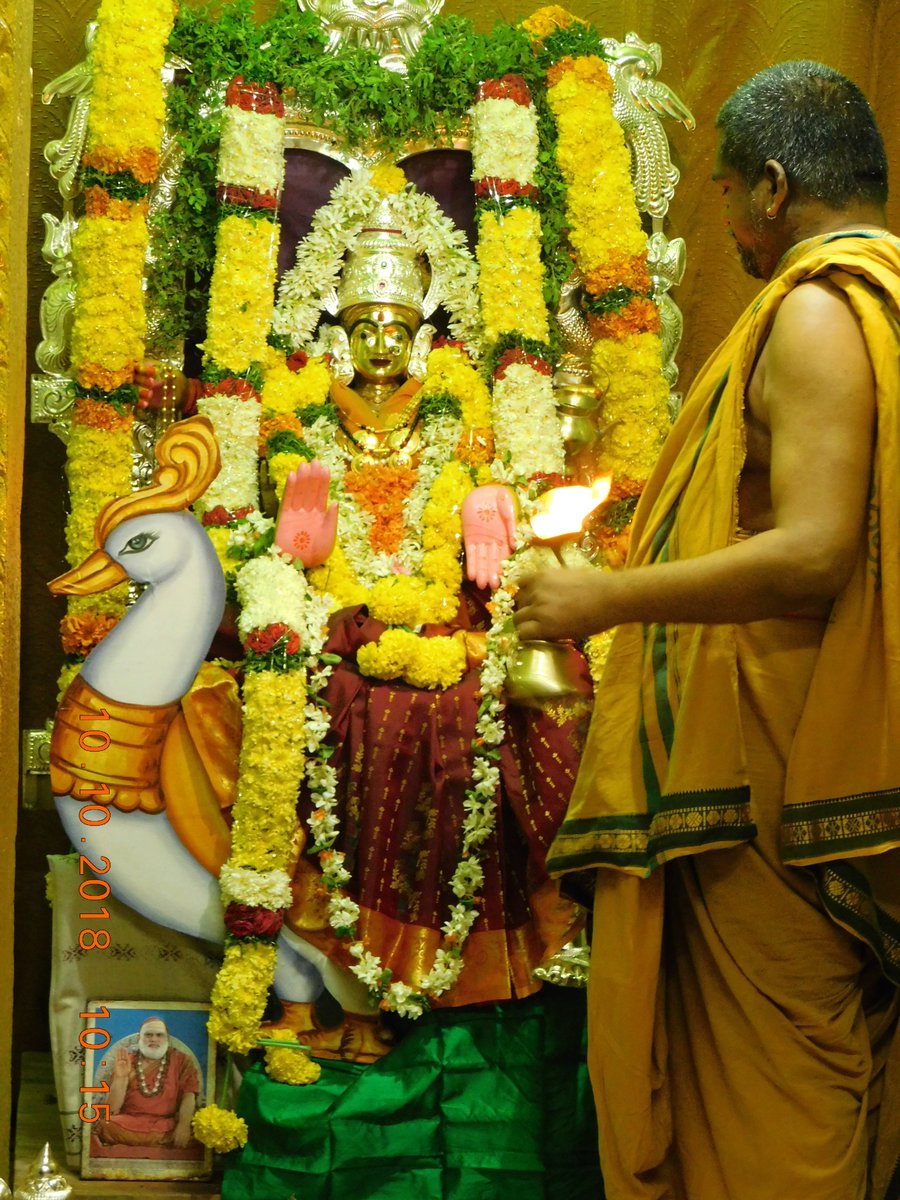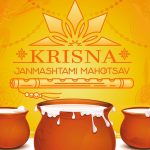The Navaratri Utsava is the most celebrated one among all the festivals at Sringeri. A Mahabhisheka to Sharadamba will be performed on the day-before-Navaratri (i.e. on No-moon-day of the month of Bhadrapada). Various types of Phala-Panchaamrita Abhisheka is followed by Shata Rudraabhisheka with Mahaanyasa and 108 Abhisheka while chanting Sri Sukta. The mother will be offered with Jagatprasutika Alankaara on that day.
Jagatprasutika Alankaram: With a smile on her face Mother Sharada fondles a cute baby on her lap as if she is telling her devotee that “I am the mother of the whole creation and you are my child. You will ever be taken care of as this baby on my lap if you seek me”. This Alankara will be very nice. Navaratri festival starts from the next day. Every day new Alankara will be made to Sri Sharadamba throughout Navaratri. It will not be an exaggeration to tell that even two eyes are not enough to see this splendor.
Hamsavahana Alankararam – BRAHMI: Mother Sharada who is the queen of Brahma Deva, sitting on Hamsavaahana bless her devotees beholding in her hands the Kamandalu, Aksha Maala, Pustaka, Pasha, and Chinmudra.
Vrishabhavahana Alankaram – MAHESHWARI: Adi Shakti, the concert of Maheshwara, sitting on Vrishabhavaahana, wearing Crest-Moon, beholding Trishula bless her devotees.
Mayuravahana Alankaram – KUMARI: Mother Sharada sitting on a Peacock, beholding Shakti Ayudha, in the form of the Power of Kumaraswamy, protect the world with her grace.
Garudavahana Alankaram – VAISHNAVI: Devi as the Power of Sri Mahavishnu, sitting on Garuda, beholding Conch, Disc, and Gadaa, bless the group of her devotees.
Indrani Alankaram: Devi beholding Vajrayudha, sitting on Airavata, as the concert of Devendra and as the destroyer of demons like Vritrasura, takes care of devotees.
Veena Sharada Alankara: Mother Sharada beholding Veena in her hands, gives knowledge also to a dull-headed devotee. This Alankara is very beautiful to see.
Mohini Alankaram: It is a life-time-opportunity for the devotees to see this Alankara of Jaganmaata carrying Amritha Kalasha in her hand, who deluded the bad, cruel demons by her charm and beauty for the sake of distributing the Amritha to the angels.
Must Read: History of Durga Puja: Importance of Durga Idols in Bengali Culture
Rajarajeshwari Alankaram: Mother Rajarajeshwari who is the concert of Kameshwara, beholding Pasha, Ankusha, Pushpabaana, and Chapa, with her merciful-eyes, adorned with all the ornaments, fulfills all the desires of her devotees through her divine grace.
Simhavahana Alankaram – CHAMUNDA: Jaganmaata has taken this form of Chamunda to protect the good people and to destroy the cruel demons Chanda, Munda, etc. She sits on Simhavaahana holding Trishula in her hand.
Gajalakshmi Alankaram: Sri Gajalakshmi sitting on the lotus and being saluted by the elephants on both sides, with a smiling face, gracefully gives wealth, food, happiness, and prosperity to her devotees.
Significance of Alankaras
A quote cited by Devi in Sri Devi Mahatmyam says “Ekaivaaham jagatyatra dviteeya kaa mamaaparaa” (I am the only eternal power in the world and none else the second). Therefore all these different Alankaras and Avataras are of Jaganmaata only. That Jaganmaata takes the form of Saraswati and bestows education and knowledge, takes the form of Mahalakshmi and gives wealth, food, etc., and takes the form of Mahakaali (Chamundi) during the time of the destruction of evil-minded people, takes the form of Durga Parameshwari to make her devotees to get rid of all the fear. She safeguards her devotees through different names and forms. Though the forms and names of Jagadamba are numerous, the spirit is the same. Such a great philosophical truth is there in the process of making different Alankaras to Devi.
[video_ads]
[video_ads2]
You can send your stories/happenings here:info@religionworld.in









